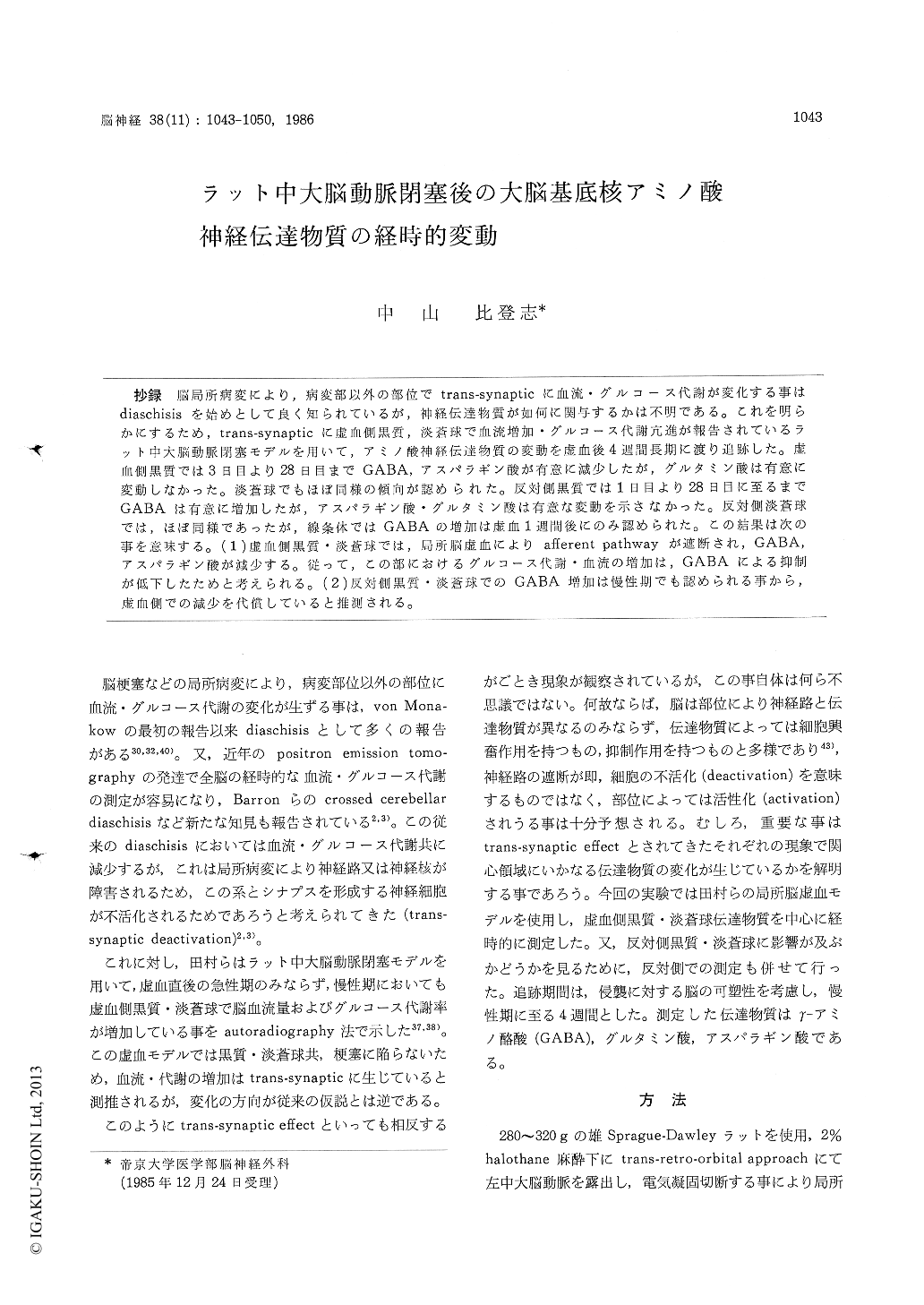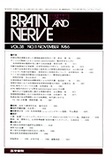Japanese
English
- 有料閲覧
- Abstract 文献概要
- 1ページ目 Look Inside
抄録 脳局所病変により,病変部以外の部位でtrans-synapticに血流・グルコース代謝が変化する事はdiaschisisを始めとして良く知られているが,神経伝達物質が如何に関与するかは不明である。これを明らかにするため,trans-synapticに虚血側黒質,淡蒼球で血流増加・グルコース代謝亢進が報告されているラット中大脳動脈閉塞モデルを用いて,アミノ酸神経伝達物質の変動を虚血後4週間長期に渡り追跡した。虚血側黒質では3日目より28日目までGABA,アスパラギン酸が有意に減少したが,グルタミン酸は有意に変動しなかった。淡蒼球でもほぼ同様の傾向が認められた。反対側黒質では1日目より28日目に至るまでGABAは有意に増加したが,アスパラギン酸・グルタミン酸は有意な変動を示さなかった。反対側淡蒼球では,ほぼ同様であったが,線条体ではGABAの増加は虚血1週間後にのみ認められた。この結果は次の事を意味する。(1)虚血側黒質・淡蒼球では,局所脳虚血によりafferent pathwayが遮断され,GABA,アスパラギン酸が減少する。従って,この部におけるグルコース代謝・血流の増加は,GABAによる抑制が低下したためと考えられる。(2)反対側黒質・淡蒼球でのGABA増加は慢性期でも認められる事から,虚血側での減少を代償していると推測される。
Focal brain lesion is known to induce changes of blood flow and glucose metabolism in the areas other than the lesioned part itself. A well known example of this remote effect is so called diaschisis. To clarify the role of neurotransmitters in this phenomenon, amino acid neurotransmitters were measured in rat basal ganglia after middle cerebral artery occlusion. In the same ischemia model, blood flow and glucose metabolism have beenreported to increase in the ipislateral substantia nigra and globus pallidus in the postischemia pe-riod.
Our results showed that GABA and aspartate were reduced in ipislateral substantia nigra and globus pallidus from the 3 rd day on, with gluta-mate level showing no singnificant change. In the contralateral substantia nigra, GABA increased significantly from the 1st day through the 28th day, whearas glutamate or aspartate showed no significant change. The same, although less pro-nounced, tendency was observed in the contra-lateral globus pallidus. In contralateral striatum, GABA increased only during the 1st week.
These results may be interpreted as follows. (1) GABA and aspartate were reduced in ipsi-lateral substantia nigra and globus pallidus due to the afferent pathway interruption caused by focal ischemia. The reduction of inhibitory GABA pro-bably set neurons in these nuclei in a relatively activated state, resulting in the elevation of glu-cose metabolism and blood flow. (2) Increment of GABA in contralateral substantia nigra and globus pallidus can be attributed to a compensation for the reduction in ipislateral nuclei, because the in-crement was observed even in a chronic phase. This hitherto unknown phenomenon will raise an interesting problem as to the plasticity of the damaged brain.

Copyright © 1986, Igaku-Shoin Ltd. All rights reserved.


